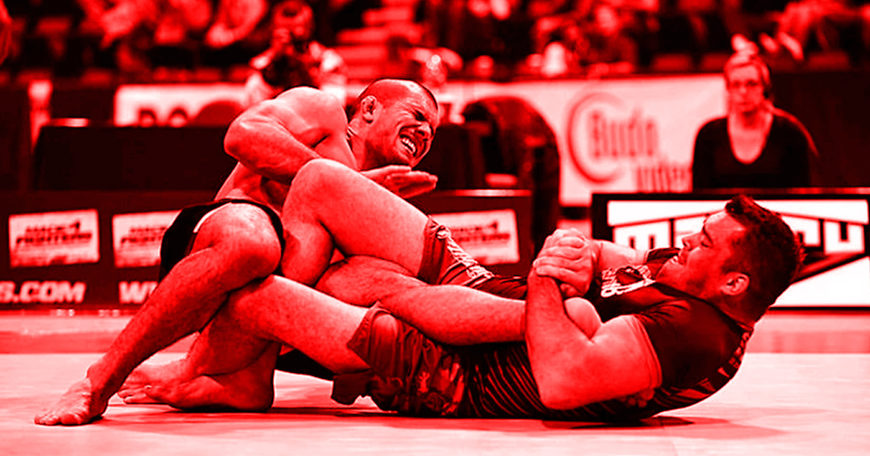Once a controversial submission subset in jiu-jitsu, leg locks are now becoming part of the norm in the grappling world. Though leg locks have been a part of BJJ and submission grappling for ages now, they’ve been popularized in recent years by the success of athletes like Eddie Cummings, Lachlan Giles, Garry Tonon, and Gordon Ryan. Even the IBJJF, which has held off on permitting any positions or submissions that twist the knee, has recently announced that they will be permitting heel hooks and reaping (a leg entanglement that puts pressure on the outside of the knee by crossing the outside leg over the midsection of the body) for brown and black belts starting in 2021.
At this point, proficiency in leg locks is basically a requirement for any elite jiu-jitsu athlete. Even lower-level practitioners who have no desire to be world champions or MMA fighters who prefer to keep the fight on the feet should still be familiar with leg locks and the positions that make them susceptible to heel hooks, kneebars, and toe holds.
If you’re new to BJJ or simply new to the world of leg locks, understanding common leg lock positions can teach you when to attack your opponent’s legs and feet. More importantly, however, it can keep you safe, giving you an opportunity to escape or tap out in time before it’s too late.
Key Concepts To Remember When Practicing Leg Locks
Before jumping into specifics about leg locks, it’s important to understand why these positions work… and why you have to be extra careful when drilling them.
1- Recovering from a leg lock injury is long and difficult
Yes, every submission in jiu-jitsu carries a risk of injury. The difference, however, is that we rely heavily on our legs to get through our day. Tapping too late to a heel hook can destroy ligaments in your knee, requiring surgery and six months away from training, to recover. Even lesser injuries, like those that are common in toeholds and straight ankle locks, can still take a while to heal if we continue to walk on them. As with any submission, tapping “too early” rather than too late is crucial when it comes to leg locks.
2- Not all leg locks are allowed in competition
Generally speaking, if you’re a white or blue belt, you will likely only be allowed to do straight foot locks in competition. Reaping is also prohibited for lower belts in many tournaments. Always check the rules of a competition before you compete so you can make sure you’re drilling submissions that are actually allowed for your division. You don’t want to get disqualified for heel hooking your opponent.
3- Knee control is everything
As we examine key leg lock positions, you’ll notice that they all require controlling your opponent’s leg above the knee. Without this control, your opponent will have the range of motion they need to navigate their way out of danger. Similarly, if you’re caught in a leg entanglement, you also have a much better chance of avoiding the submission if you force your opponent’s point of control below your knee.
With those important points in mind, here are the three most common leg lock positions you will likely find yourself in while rolling:
Single-Leg X-Guard/Ashi Garami
“Single-leg x” and “ashi garami” are often used interchangeably, but many athletes insist that “single-leg x-guard” refers to the standing position, while “ashi garami” should refer to the seated position. The concept from both the sitting and standing position involves putting your inside foot between your opponent’s legs to control the far leg, while your outside foot stays on your opponent’s nearside hip.
In addition to being a great position to sweep from, the single-leg x is a relatively simple leg lock position. It offers effective control of the hip and knee and puts you in a good position for straight ankle locks (which are allowed for most adult white belts and above in competition) and heel hooks (which are usually reserved for advanced competitors). This position is considered a jiu-jitsu fundamental, and while it’s one of the first leg lock positions many beginners learn, elite practitioners also love the ashi garami.
Check out the video below from leg lock expert Lachlan Giles to learn how to secure a straight ankle lock from this position:
50/50
The 50/50 is another popular and relatively simple leg lock position that’s legal for white belts and still effective at the professional level. To enter it, you trap your opponent’s leg between your own legs, bringing your inside leg over and crossing your ankles. Your opponent is likely to do the same to you at the same time, putting you both in a strategically equal situation (hence the name of the position).
The 50/50 opens up a world of opportunities for leg locks, but it can also be a good defensive position if your opponent is trying to attack your legs. Toe holds, kneebars, heel hooks, and straight ankle locks are a few of the most common leg locks to attack from 50/50, but watch out — your opponent also has these opportunities available to them in 50/50, so you’ll need to focus on defense just as much as offense.
Here’s a leg lock demonstration from Tarsis Humphreys if you want to work on your own attacks from 50/50:
The Saddle
Also known as inside sankaku, the 4-11, or the honeyhole, the saddle is a popular position for more experienced leg lockers. Your opponent’s leg will be pulled across your body, with your attacking leg (the one closer to their hip) over their thigh and your defending leg woven under their farside leg. Your leg position will loosely resemble the number ‘4’ if done correctly.
The saddle is considered one of the superior positions for leg locks, but it’s not legal in most beginner and intermediate categories in competition due to the outside pressure put on the defending athlete’s knee. However, once you’re ready and allowed to use this position, it can provide a tight and controlled entry to heel hooks, toe holds, and kneebars. Many top leg-locking competitors heavily rely on the saddle, and it’s a must-know for any BJJ athlete who wants to improve their leg lock attacks and defenses.
Here’s another video from Lachlan Giles demonstrating how to stay safe and get an inside heel hook from the saddle position:
A Leg Up on the Competition
Whether or not you have aspirations of being an ADCC champion one day, learning leg locks is crucial to staying safe on the mats and keeping up with the seemingly infinite number of techniques available to us in jiu-jitsu. Practice these positions with your trusted training partners, and you may be surprised at how much you enjoy going after lower-body submissions.










